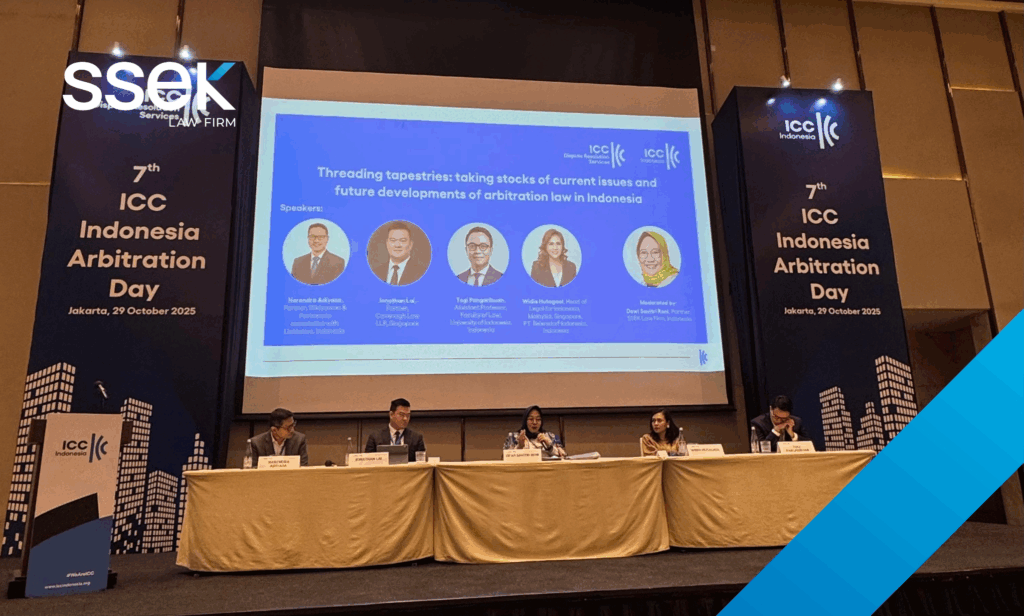The Indian construction industry has long grappled with a fundamental confusion that has cost contractors millions in unrecovered damages. The terms “profits” and “profitability” have frequently been used interchangeably by the legal community in India when addressing cases related to damages from contractual breaches. However, the two stand as distinct concepts and conflating them can lead to confusion or raise questions on legitimacy. Recent judicial developments, however, are finally bringing much-needed clarity to this critical distinction.
The Watershed Moment: Calcutta High Court and Delhi High Court’s Clarification
The Hon’ble High Court of Calcutta recently drew a distinction between claims of profit and claims of profitability, in State of West Bengal v. M/s S.K. Maji 2025 SCC OnLine Cal 3945. It was held that loss of profits refers to financial losses incurred when a contract is wrongfully terminated before completion, resulting in unrealised earnings. In contrast, loss of profitability refers to losses incurred from delays, which prevent the innocent party from gaining profits through alternative opportunities or accepting additional projects during the extended contract period.
The Hon’ble Calcutta High Court referred to the Delhi High Court’s judgment in Shri Ajay Kalra v. Delhi Development Authority, 2023:DHC:947, which clearly delineated the distinction between the two heads of claim and observed that whilst loss of profits arises from wrongful termination, loss of profitability constitutes an opportunity loss arising from prolonged stay at site.
These landmark rulings have profound implications on how contractors structure their claims.
Loss of Profits: Evidence of Wrongful Termination is Sufficient Without Requirement of any Further Evidence
“Expectation interest” refers to potential profits or expected gains that may arise from contract performance, which the contractor may have expected to earn had the contract not been wrongfully terminated.
Recently, the Calcutta High Court in State of West Bengal v. M/s S.K. Maji 2025 SCC OnLine Cal 3945 has held that:
“It is a general principle of law of contract that in case of breach of contract, the injured must be put back in the same position that he would have been if he had not sustained the wrong. Once the contractor has established an illegal and unjustified termination of contract and a breach thereof on the part of the employer, the contractor cannot be further obligated to establish a loss suffered on account of such breach, because a reasonable expectation of profit is implicit in a works contract”.
Similarly, in B.B.M. Enterprise v. State of W.B., 2025 SCC OnLine Cal 6087, another recent case, a petition under Section 34 of the Arbitration and Conciliation Act was filed before the Hon’ble Calcutta High Court to set aside an arbitral award, citing insufficient evidence for determining loss of profit. In addressing this challenge, the Hon’ble Calcutta High Court held that where an employer is guilty of breaching a contract, the contractor becomes entitled to damages by way of loss of profit. Based on this legal foundation, the Hon’ble High Court upheld the arbitral tribunal’s award, which had determined the loss of profit based on a percentage of the value of the unexecuted work. This significant judgment establishes that to claim damages by way of loss of profit, there is no requirement to prove actual loss with precise documentation.
Accordingly, a contractor may submit a claim for loss of profits relating to the unexecuted portion of the works if the contract is wrongfully terminated, without any requirement to adduce any further evidence.
Loss of Profitability: The Complex Claim and Evidentiary Standards
In the context of construction contracts, loss of profitability refers to the claim by the contractor for a reduction in its expected financial returns/ profits due to non-completion of a project within the stipulated time due to factors attributable to the employer/ owner. Unlike simple loss of profit claims, which typically cover specific, identifiable profits lost due to breaches and wrongful termination, loss of profitability addresses broader impacts on a contractor’s overall financial status due to delays attributable to the employer and consequent extension of project timelines.
Loss of profitability claims face a substantially higher evidentiary burden. The Supreme Court has affirmed the essential elements for granting a “Loss of Profitability” claim in Unibros v. All India Radio, 2023 SCC OnLine SC 1366, by stipulating a four-pronged test whereby, in a claim for loss of profitability, the claimant must prove:
- that there was a delay in the completion of the contract;
- that the delay is not attributable to the claimant;
- that the claimant has a status of an established contractor, handling substantial projects and
- that there is credible evidence to substantiate the claim of loss of profitability.
The Formula Framework: Hudson, Emden, and Eichleay
There are three popular methods to calculate loss of profitability.
Hudson Formula
This was delineated in Hudson’s seminal work in Building and Engineering Contracts. The formula has been criticised for the use of the contractually laid out overhead, which often does not align with the actual overheads undertaken during the execution of the contract. This formula is as follows:
(Contract head office overhead and profit percentage) x (contract sum/contract period) x period of delay
Emden Formula
This formula on the other hand, laid out in Emden’s Building Contracts and Practice,has been praised for computing loss basis the actual overhead and profit to provide a more holistic result. This formula is:
(Head office overhead and profit/100) x (contract sum/contract period) x period of delay
Eichleay Formula
The Eichleay formula is a three-steps process and calculates overhead claims by using the below formula:
Step I: (Contract billings/total billings for contract period) x (total overhead for contract period) = overhead allocable to the contract Step II: (Allocable overhead/total days of contract) = daily overhead rate Step III: Daily contract overhead rate x number of days of delay – amount of unabsorbed overhead
In India, the abovementioned formulae gained judicial recognition in the seminal case of McDermott International Inc v. Burn Standard Ltd and Ors, (2006) 11 SCC 181, where the Hon’ble Supreme Court held that:
“It is an accepted position that different formulas can be applied in different circumstances and the question as to whether damages should be computed by taking recourse to one or the other formula, having regard to the facts and circumstances of a particular case, would eminently fall within the domain of the Arbitrator”.
Most cases, however, refer to these formulas in the name of loss of “profit” rather than profitability, despite that these formulas do not account for losses caused due to breaches and wrongful termination and expressly focus on losses caused as a result of prolongation. The prevailing formulae applied in construction arbitration to quantify the loss of profitability have increasingly attracted critical scrutiny, primarily due to their foundational assumptions. It is frequently argued that these models inadequately account for the complex realities of construction projects, thereby producing damage assessments that often do not reflect the ground realities of construction projects.
The Hon’ble Supreme Court in Batliboi Environmental Engineers Ltd. v. Hindustan Petroleum Corporation, 2024 SCC 2 375 has held that mere reliance on the above mentioned formulas is not sufficient and a party must establish actual loss in profitability as a result of resources being tied up for longer than anticipated. A contractor must prove there was other work available that would have been secured if not for the delay, by producing invitations to tender declined due to insufficient capacity to undertake other work. This must be corroborated through books of accounts demonstrating a drop in turnover specifically attributable to the particular delay, rather than extraneous causes.
The elements that have now been stipulated by way of numerous judgments may seem stringent. However, they are still within the realm of proof that can be submitted along with the claims by a contractor. All the above criteria are in the form of quantifiable data, which can be produced by a diligent contractor during the arbitration proceedings.
The Path Forward: Strategic Claim Drafting
Due to the significant distinctions in definitions, standards of proof, evidentiary requirements, and methods for computing loss of profits and profitability, it is imperative to carefully craft claims for compensation in construction contract disputes. Loss of profits and loss of profitability provide two very different recourses to claimants. Further, their independent standing deserves recognition to fairly and justifiably compensate innocent parties against harms caused by breaching parties.
Contractors must now approach claim drafting with surgical precision, understanding that:
- Loss of profits claims require proof of wrongful termination and expected profits from unperformed work
- Loss of profitability claims demand evidence of delays, alternative opportunities, and quantifiable financial impact
- Documentary evidence must be contemporaneous and comprehensive
- Formula application requires meeting stringent pre-conditions and the need to prove actual loss by way of documentary evidence.
Conclusion
The distinction between loss of profits and loss of profitability represents more than an academic legal theory — it’s a practical reality that can determine the success or failure of rupee claims in crores. As Indian jurisprudence continues to evolve, contractors who understand these nuances and prepare accordingly will be better positioned to recover legitimate damages, while those who conflate these concepts risk leaving substantial compensation on the table.
The construction industry’s future depends on clear legal frameworks that fairly compensate innocent parties while preventing speculative claims. Recent judicial developments suggest that we’re moving in the right direction, but the onus is on legal practitioners and contractors to master these distinctions and apply them effectively in practice.

For further information, please contact:
Kapil Arora, Partner, Cyril Amarchand Mangaldas
kapil.arora@cyrilshroff.com





